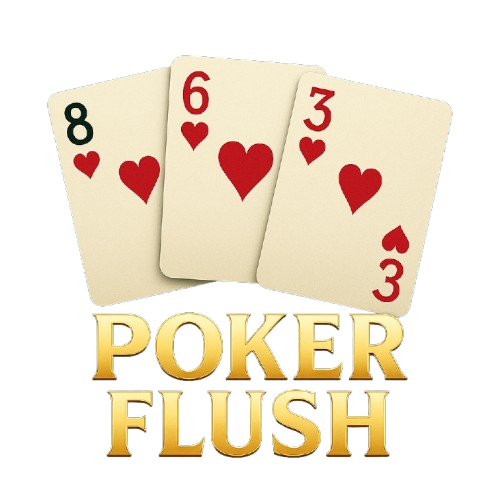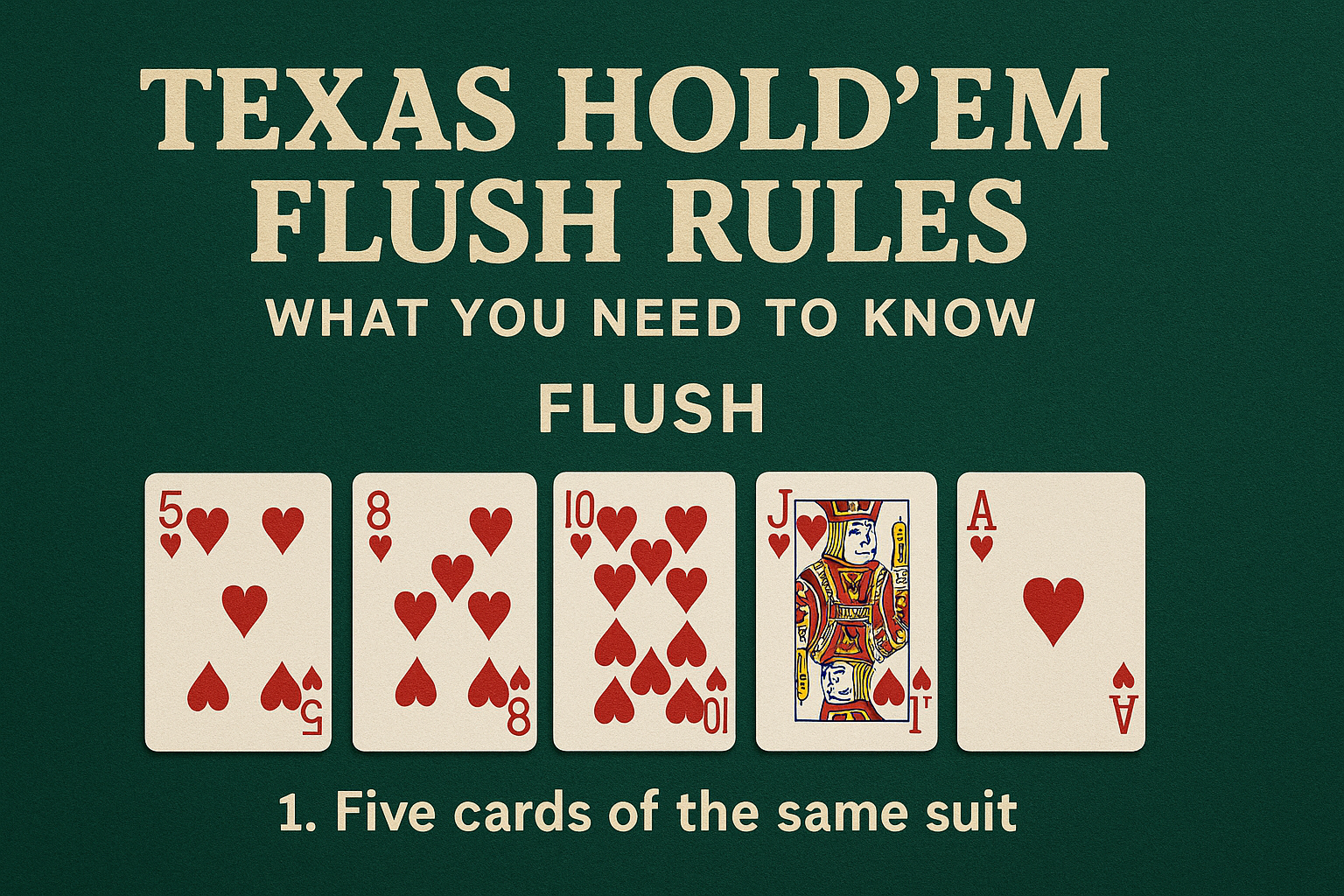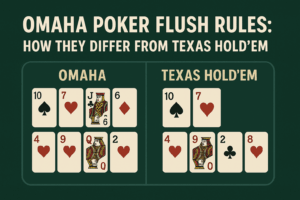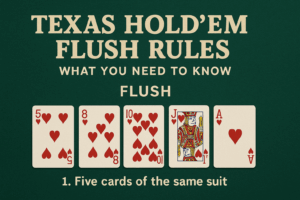A flush is one of the most recognizable and powerful hands in poker. It consists of five cards of the same suit, regardless of their numerical order. For example, if you have five cards that are all hearts—such as 2♥, 6♥, 9♥, J♥, and K♥—you have a flush. The values of the cards don’t need to be in sequence, they simply need to share the same suit.
Flushes are relatively strong hands in many forms of poker, particularly in Texas Hold’em. However, the strength of a flush can vary depending on the ranks of the cards, and that’s where understanding the flush poker rules high card becomes essential.
Why Understanding Poker Flush Rules Matters
For beginners, one of the first hurdles in mastering poker is learning how each hand ranks. Knowing the flush rules helps in identifying your winning potential during a game. Many novice players misjudge the power of their flush or fail to recognize when a higher flush beats theirs. This misunderstanding can lead to costly mistakes, especially in real money poker games.
Being familiar with the hierarchy of flush hands allows you to make more informed decisions at the table. For instance, you’ll know when it’s wise to raise your bet or when it’s better to fold if you suspect your opponent has a stronger flush.
Flush vs. Other Poker Hands
In standard poker hand rankings, a flush beats several other combinations such as a straight, three of a kind, two pair, one pair, and high card. However, it is weaker than a full house, four of a kind, straight flush, and royal flush.
This positioning in the hand ranking system makes a flush a moderately powerful hand. Its strength becomes even more valuable when played correctly, especially if you can read the board and anticipate your opponents’ possible hands.
How Flushes Are Ranked in Poker
Many beginners assume that all flushes are equal, but that’s a common misconception. The poker flush rules high card are what determines which flush is superior in a showdown.
When two or more players have a flush, the winner is decided by comparing the highest card in each flush. If the highest cards are equal, the next highest cards are compared, and this continues until a difference is found. For instance, a flush with K♦, J♦, 9♦, 7♦, and 5♦ beats a flush with Q♠, J♠, 10♠, 8♠, and 7♠ because the king is higher than the queen.
In rare cases where the top five flush cards are identical in rank and suit (which can happen in community card games like Texas Hold’em), the pot may be split between players.
Examples of Flush Hands and High Card Scenarios
Let’s take a practical look at how flushes can be ranked using the high card:
Player A has: A♠, J♠, 10♠, 6♠, 2♠
Player B has: K♠, Q♠, 9♠, 5♠, 4♠
Player A wins because the ace is higher than the king.
If both players had a king as their highest card, the decision would go to the second highest. This flush poker rules high card concept continues all the way down to the lowest card in the five-card hand.
Understanding this rule is critical. Many new players focus only on achieving five suited cards and forget that the actual value of each card in the flush matters during a showdown.
Flush in Texas Hold’em: A Common Scenario
In Texas Hold’em, players share five community cards and are dealt two private hole cards. A flush can be made using any combination of those seven cards, but only the best five count.
Consider the following community cards: 4♥, 7♥, 9♥, K♥, 2♥.
Player A holds: Q♥ and 10♠
Player B holds: J♥ and 3♣
Both players technically have a flush using the five hearts on the board. However, neither player’s hole cards improve the flush. Since the best five-card combination available is the same for both, the hand would be a split pot.
Now, imagine if Player A had A♥ instead of Q♥. That would make Player A the winner, as their flush would be ace-high, overriding the king-high community flush.
Common Mistakes Beginners Make With Flushes
One of the most frequent mistakes is overvaluing a low flush. New players often get excited when they hit a flush, forgetting that their opponent could have a higher one. For example, holding 3♦ and 5♦ on a board with 9♦, 10♦, Q♦, 2♣, and 7♠ might feel strong, but it is a vulnerable flush against anyone holding higher diamonds.
Another common error is chasing a flush draw without proper odds. In poker, the number of outs (cards that can complete your flush) and the pot odds (the amount you stand to win vs. the cost of your bet) should be considered before committing chips to the pot.
Understanding the real value of your hand, especially in multiway pots, helps avoid traps and unnecessary losses.
Strategic Use of Flushes in Gameplay
A well-played flush can be a powerful tool, especially when used to extract value or bluff effectively. In games like No-Limit Texas Hold’em, players often slow-play a strong flush to trap opponents or represent a flush to force folds.
However, your ability to recognize when you have the *nut flush*—the highest possible flush based on the board—is vital. For instance, if the board has four hearts and you hold the ace of hearts, you have the best possible flush. If you don’t hold the ace, and suspect someone else does, caution is advised.
Being strategic with your betting behavior and understanding how your opponents perceive your hand strength can help maximize gains and minimize losses.
Flush Draws: Turning Potential Into Profit
A flush draw occurs when you have four suited cards and are waiting for the fifth to complete your flush. This is a strong drawing hand but still incomplete. Betting strategies vary depending on your position, stack size, and your opponents’ tendencies.
In early stages of tournaments or cash games, it’s often wise to play conservatively unless your draw includes high cards or is combined with other possibilities, like a straight flush draw. On the turn and river, knowing when to bet, check, or fold comes with experience and a deeper understanding of implied odds.
Flush vs. Straight Flush: A Key Distinction
While a flush is a strong hand, it is significantly weaker than a straight flush, which consists of five sequential cards of the same suit. For example, 5♣, 6♣, 7♣, 8♣, and 9♣ form a straight flush. It’s important not to confuse the two.
A straight flush beats any regular flush, and recognizing when this rare hand is possible based on the board can help you avoid big losses. Especially when multiple suited cards are on the table, you must consider whether your opponent might be holding a connected hand that completes a straight flush.
Conclusion: Mastering the Flush Is Essential for Poker Success
The flush is a cornerstone of poker hand rankings and a valuable asset in a player’s strategic toolkit. Understanding the poker flush rules, especially the flush poker rules high card system, empowers you to evaluate your hands more effectively and play with greater confidence.
As you gain more experience at the table, you’ll become better at reading the board, estimating the strength of your flush relative to your opponents, and using that information to make smarter moves. With proper discipline and knowledge, your flush can be more than just a lucky hand—it can be a consistent source of wins.
For further in-depth strategies and examples, you might find this guide on poker hand rankings helpful.





